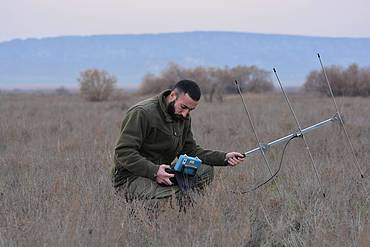The WWF is run at a local level by the following offices...
- WWF Global
- Adria
- Argentina
- Armenia
- AsiaPacific
- Australia
- Austria
- Azerbaijan
- Belgium
- Bhutan
- Bolivia
- Borneo
- Brazil
- Bulgaria
- Cambodia
- Cameroon
- Canada
- Caucasus
- Central African Republic
- Central America
- Central Asia
- Chile
- China
- Colombia
- Croatia
- Democratic Republic of the Congo
- Denmark
- Ecuador
- European Policy Office
- Finland
Historically, the Goitered Gazelle (Gazella subgutturosa), grazed the plains of Azerbaijan and Georgia in abundance, with populations in the Kura-Ara(k)s river lowlands reaching almost to Tbilisi in the early 1900s. Due to agricultural expansion and intense hunting, the species became extinct in Georgia in the 1960s and the total number of animals in Azerbaijan dramatically decreased to as well. Today, the Goitered Gazelle is categorised in the IUCN Red List as Vulnerable (VU) (IUCN SSC Antelope Specialist Group 2017). In the Red Book of Azerbaijan, it is listed as a “species distributed at the edge of its global range, which can become extinct without protection measures”). In the Red List of Georgia, the species is listed as extinct in the country. However, the successful implementation of WWF-Caucasus’s Gazelle Reintroduction Programme will lead to a re-assessment of species status in the Red List of Georgia.
Our Gazelle programme is based on the reintroduction of individuals taken from healthy populations in Azerbaijan and released in Georgia. WWF-Caucasus, with the generous support of the Ministry of Ecology and Natural Resources of Azerbaijan, has been successfully implementing the programme since 2013.
Since the start of WWF-Caucasus’s Gazelle Reintroduction Programme, altogether, around 80 individuals have been translocated from Shirvan to several sites in Azerbaijan and near the Georgian part of the Samukh Steppe. Since the Inception of the project, by 2023, nine new generations of Gazelles were born in eastern Georgia on the Samukh Steppe, bordering Vashlovani Protected Area. Presently, the estimated number of Gazelles in Georgia is around 250 individuals.
The local ranger program has been an important part of the success of the programme, which involves local rangers who monitor the parks and protected areas where relocations occur and have access to experts and equipment to monitor progress.








